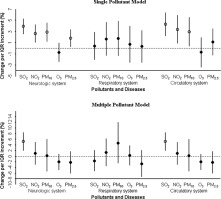当前位置:
X-MOL 学术
›
Sci. Total Environ.
›
论文详情
Our official English website, www.x-mol.net, welcomes your
feedback! (Note: you will need to create a separate account there.)
Short-term associations of ambient air pollution and cause-specific emergency department visits in Guangzhou, China
Science of the Total Environment ( IF 8.2 ) Pub Date : 2017-09-14 , DOI: 10.1016/j.scitotenv.2017.09.102 Pi Guo , Wenru Feng , Murui Zheng , Jiayun Lv , Li Wang , Ju Liu , Yanhong Zhang , Gangfeng Luo , Yanting Zhang , Changyu Deng , Tongxing Shi , Pengda Liu , Lin Zhang
更新日期:2017-09-15
Science of the Total Environment ( IF 8.2 ) Pub Date : 2017-09-14 , DOI: 10.1016/j.scitotenv.2017.09.102 Pi Guo , Wenru Feng , Murui Zheng , Jiayun Lv , Li Wang , Ju Liu , Yanhong Zhang , Gangfeng Luo , Yanting Zhang , Changyu Deng , Tongxing Shi , Pengda Liu , Lin Zhang

|











































 京公网安备 11010802027423号
京公网安备 11010802027423号